Clay soil
User
8 years ago
Featured Answer
Sort by:Oldest
Comments (53)
User
8 years agoRelated Discussions
Soil amendments: clay soil, fully planted beds
Comments (16)My first garden was created 5 years ago...we took off the sod, amended with compost, tilled and planted and mulched. It was a nightmare. I probably needed 60 times more compost, and never could have afforded it. The following two years I hated working in the garden because it was such hard work with the clay and many plants didn't thrive. I replanted areas many times and each time I would add more compost/mulch, whatever I could get my hands on. I also added a soil conditioner that was very expensive but works like gypsum...breaks down clay. (Who knows, maybe it WAS gypsum with a bigger price tag.) It's 6 years later now and I have to tell you that the garden is just a delight to work in now. I plan to spread gypsum a couple of times each year and continue mulching the beds, but I'm sure I'll never have to do all that double-digging like I did before....just keep on piling on the stuff like everyone wrote above, and before you know it, your beds will be as you need them to be. I also highly recommend that you search out plants that LIKE clay, so that your plantings will be successful. I spent many, many dollars buying plants that needed more drainage than I had and would die...and I wondered why. Some of those plants might do ok for me now in the same garden, but I think it's important to plant things that actually LIKE the ground that they are in today. Good Luck!...See MoreIs my soil clay soil for the most part?
Comments (5)While not technically possible to determine (some clays do have lower ECs), the probable answer and the one I'm going to give you is, "No, it isn't." What is going on is that your calcium:magnesium ratio is completely borked. I'm also giving that sodium a rather jaundiced eye, as it, too, will cause a soil to act like clay when it isn't--and is boosting the pH, which would look far worse than it does if the sodium weren't there and send a better emergency red light than it's currently doing. It's just another reason to hate pH tests, which give you practically none of the truth and I wish would die in terrible fires worldwide. :-) So I wouldn't blame your soil (which actually, from the EC, looks more like silty sand than clay!) I'd blame the fact that the soil chemistry isn't good at all. Any soil will crack when dry, particularly if deflocculated (falling apart due to bad chemistry). My silt used to do it. And no, just adding organic matter isn't going to fix this. It'll suppress the cracks a little as it flexes better, but the underlying structural problems are all still there. Fix the soil chemistry first, simultaneously with adding OM if you want. But fix the soil chemistry, which is seriously not good. Did you ever do anything with the number from this test? They show a lot of required changes to improve this for most grasses (centipede being the exception) and gardens (blueberries being one exception). With the test being a year old, I wouldn't be comfortable making recommendations on it and would get a new test. It's really not a great idea to make recommendations on a test where anything could have happened and rainfall certainly did, which will change the soil....See MorePea Gravel and Clay Soil
Comments (11)clay is one of the most nutritious soils there are ... just look around your greater area .. im sure its not barren ... the issue is drainage ... and you overcome that by planting high .. and allowing the plants to grow its roots into the clay ... before you kill it after the transplant ... you would take a potted plant.. and dig a hole half as deep as the pot.. and then build a berm with good draining soil ... so the roots can settle from the transplant.. and eventually grow down into the clay ... you should probably start by perking your soil.. to find out if its as bad as you presume ... once you find out how the soil drains.. then you have info to start planting .... https://duckduckgo.com/?q=perk+garden+soil&t=ffab&iar=videos&iax=videos&ia=videos do understand that july and august is not prime planting time for most of us ... see section one at this link.. and then read the rest ... https://sites.google.com/site/tnarboretum/Home/planting-a-tree-or-shrub i think you have a long way to go.. before you even think about playing in gravel ... but if you insist.. thats a whole other show .... do you have any idea why the gravel is there ... does it serve some function .... like a french drain ... if you are new to the house.. maybe the neighbors might know .... ken ps: if you want suggestions on what to plant.. we need to know where you are.. big city name ... and some pix of the situation ... little to me.. might be too big for you .. if you get my drift ......See MoreCan hyacinths grow in clay soil?
Comments (4)Amending individual planting holes is not a recommended practice. "Clay soil" doesn't really describe the soil in much detail. I have hyacinths in heavy soil with no issues but I also have ample organic matter and plenty of winter and spring rain, so the bulbs are not growing in baked hard soil. They return every year. Bulbs are not expensive. Plant a few and see how they do....See Morestrawchicago z5
8 years agoUser
8 years agolast modified: 8 years agostrawchicago z5
8 years agolast modified: 8 years agojim1961 / Central Pennsylvania / Zone 6
8 years agoUser
8 years agolast modified: 8 years agojim1961 / Central Pennsylvania / Zone 6
8 years agolast modified: 8 years agostrawchicago z5
8 years agostrawchicago z5
8 years agolast modified: 8 years agojim1961 / Central Pennsylvania / Zone 6
8 years agolast modified: 8 years agomsdorkgirl
8 years agostrawchicago z5
8 years agostrawchicago z5
8 years agostrawchicago z5
8 years agojim1961 / Central Pennsylvania / Zone 6
8 years agolast modified: 8 years agostrawchicago z5
8 years agolast modified: 8 years agojim1961 / Central Pennsylvania / Zone 6
8 years agostrawchicago z5
8 years agolast modified: 8 years agojim1961 / Central Pennsylvania / Zone 6
8 years agobluegirl_gw
8 years agostrawchicago z5
8 years agolast modified: 8 years agojim1961 / Central Pennsylvania / Zone 6
8 years agoUser
8 years agoUser
8 years agolast modified: 8 years agomsdorkgirl
8 years agostrawchicago z5
8 years agolast modified: 8 years agojim1961 / Central Pennsylvania / Zone 6
8 years agolast modified: 8 years agoUser
8 years agolast modified: 8 years agostrawchicago z5
8 years agolast modified: 8 years agostrawchicago z5
8 years agojim1961 / Central Pennsylvania / Zone 6
8 years agostrawchicago z5
8 years agostrawchicago z5
8 years agojim1961 / Central Pennsylvania / Zone 6
8 years agostrawchicago z5
8 years agolast modified: 8 years agojim1961 / Central Pennsylvania / Zone 6
8 years agoUser
8 years agolast modified: 8 years agoUser
8 years agolast modified: 8 years agojim1961 / Central Pennsylvania / Zone 6
8 years agostrawchicago z5
8 years agolast modified: 8 years agoUser
8 years agojim1961 / Central Pennsylvania / Zone 6
8 years agoUser
8 years agojim1961 / Central Pennsylvania / Zone 6
8 years agoUser
8 years agolast modified: 8 years agostrawchicago z5
8 years agojim1961 / Central Pennsylvania / Zone 6
8 years agolast modified: 8 years agoBc _zone10b
3 years ago
Related Stories

GARDENING GUIDESHow to Stop Worrying and Start Loving Clay Soil
Clay has many more benefits than you might imagine
Full Story
GARDENING GUIDESGardening Solutions for Heavy Clay Soils
What’s a gardener to do with soil that’s easily compacted and has poor drainage? Find out here
Full Story
GARDENING GUIDES9 Clay-Busting Native Flowers for Summer Sun
These plants survive and even thrive in tough clay soil east of the Rocky Mountains
Full Story
GARDENING GUIDESHave Acidic Soil in Your Yard? Learn to Love Gardening Anyway
Look to acid-loving plants, like conifers and rhododendrons, to help your low-pH garden thrive
Full Story
LANDSCAPE DESIGNHow to Shape a Rain Garden and Create the Right Soil for It
Learn how to grade, lay out and amend the soil in your rain garden to support your plants
Full Story
GARDENING GUIDESThe Poop Scoop: Enrich Your Soil With Good Old Manure
Get over the ick factor already — this natural super-ingredient for soil has so many benefits, you'll wonder why you ever went chemical
Full Story
GARDENING GUIDES10 Solutions for Soggy Soil
If a too-wet garden is raining on your parade, try these water-loving plants and other ideas for handling all of that H2O
Full Story
FARM YOUR YARDHow to Get Good Soil for Your Edible Garden
The nutrients in your soil feed the plants that feed you. Here are tips on getting it right — just in time for planting season
Full Story
GARDENING GUIDES5 Prairie Wildflowers That Can Heal Your Soil
Get free, organic soil fertilizer with nitrogen-pumping plants that draw pollinators too
Full Story
GARDENING GUIDESGet the Dirt on Your Garden’s Soil
Understand how your soil supports your plants so you can ensure your garden’s success
Full Story






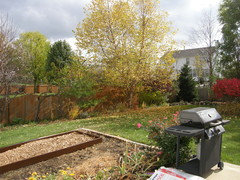







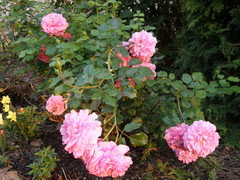
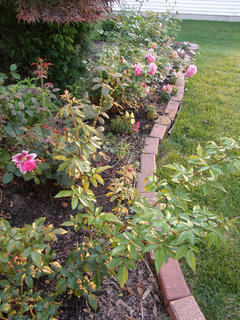





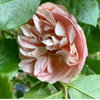
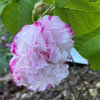
strawchicago z5